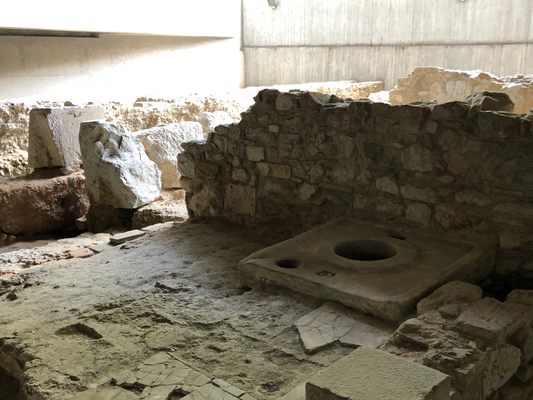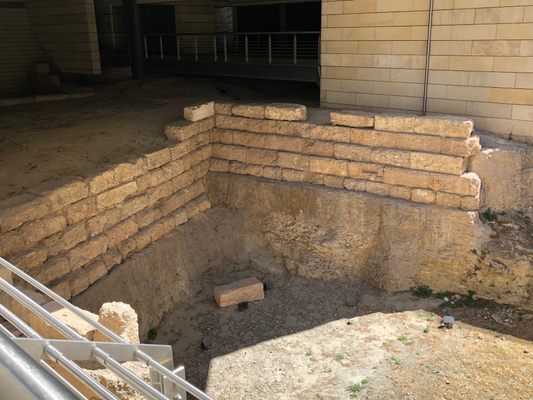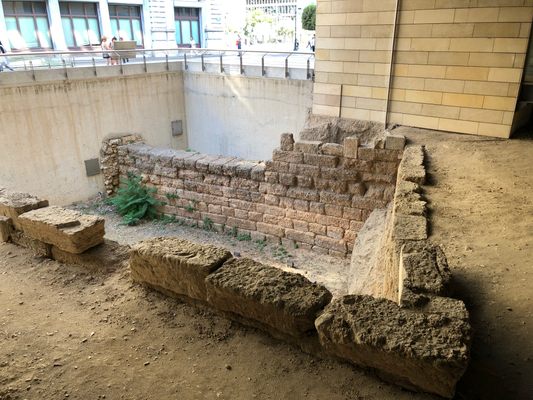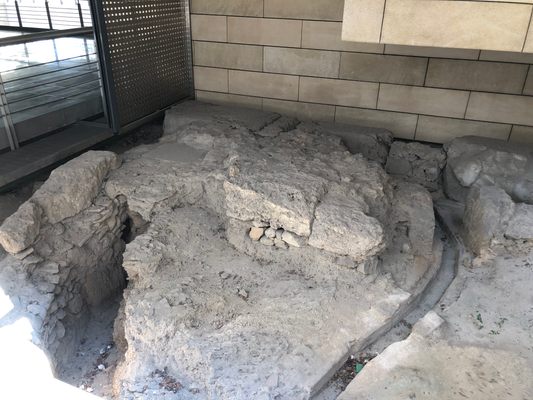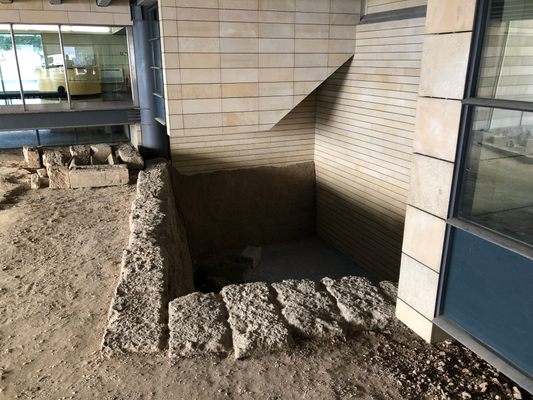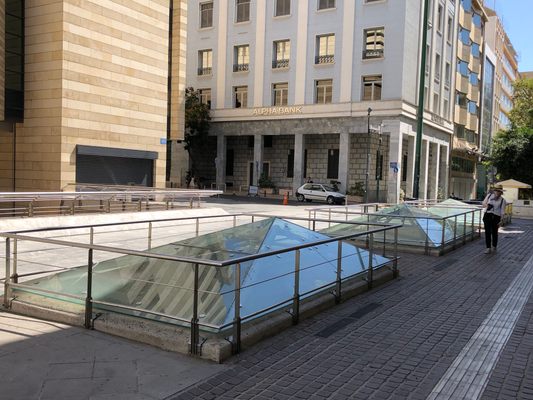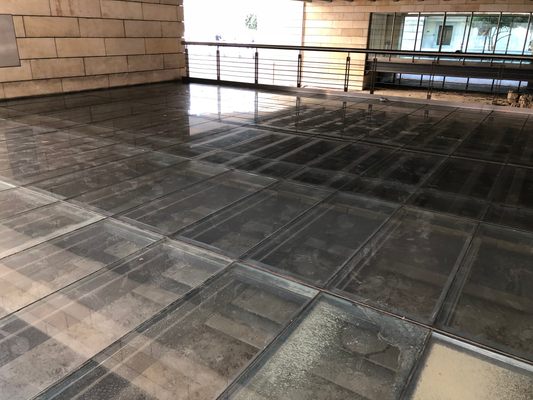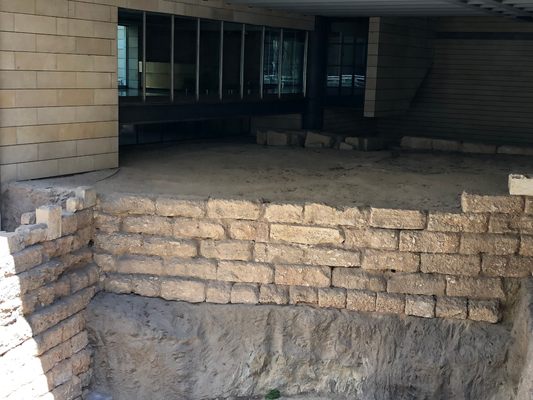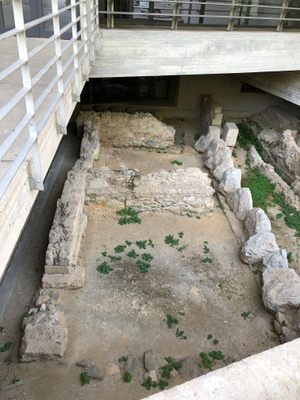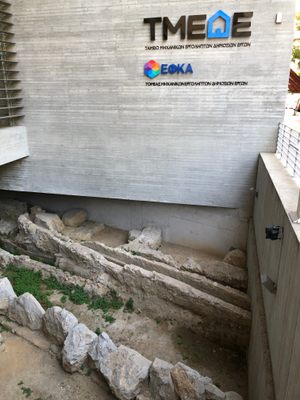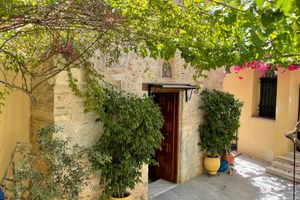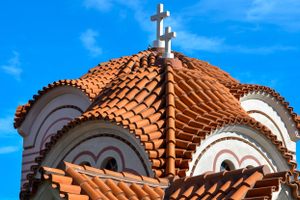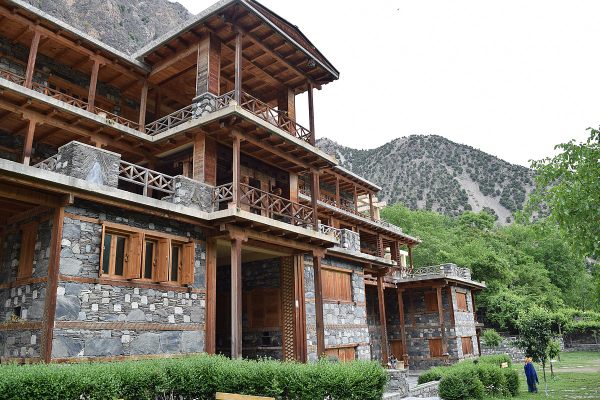About
Athens has had numerous fortification walls around the city since ancient times. These walls were mostly made with scavenged material, primarily spoila from the buildings and monuments destroyed by earlier invaders mixed with mudbrick.
In the 5th century BCE, Athenian statesman Themistocles feared the Persians would re-invade Athens, so he urged the citizens to prioritize building a new fortification wall. They did so and created the Themistoclean Wall. This wall included several access gates that allowed passages for roads. One of the roads that went through the Themistoclean Wall was the Acharnian Road. This road went from the center of Athens to Acharnes (today's Menidi) and went through what was known as the Acharnian Gate.
One of the earlier modern-day excavations in the center of Athens was conducted in 1885 on current-day Aiolou Street. This excavation resulted in the finding of important ancient ruins and several artifacts, the most impressive being a nude statue of a young Hercules dated to the end of the 4th century. Further excavations of the area were limited and sporadic until the area experienced a building boom in the 1960s and 1970s, and several excavations revealed more ancient ruins and artifacts.
Excavations during the 1970s by the Greek 3rd Ephorate of Prehistoric and Classical Antiquities revealed extensive ruins from the 5th Century BCE. These ruins were found 16 feet (5.10 meters) below street level and included a large portion of the Themistoclean Wall. The wall that traversed the excavation site went in an east-west direction, was 98 feet (30 meters long), and formed the south retaining wall of an ancient road, the remains of which were just north of the wall.
The now exposed road had large arteries that led to other sites and was well enough preserved that the grooves of cartwheels on its surface were still visible. Also found were parts of the Proteichisma (the outer wall of defense), a moat, aqueduct canals, a cemetery, and several tombstones. Numerous important artifacts from the Roman period, including the remains of five rooms with well-preserved mosaic floors, several free-standing walls, and more tombstones were also unearthed.
Further excavations in the 1980s due to the expansion of the National Bank of Greece revealed additional important finds.
Because Greece has strict laws protecting archaeological sites and artifacts, the building's renovation plans were tweaked to protect the site and allow the public to admire it. As part of the new plans, it was decided to leave some excavated areas open to the elements, protect other areas with the building overhang, construct a secure perimeter around the outdoor areas of the site, and place a protective glass walkway over other areas.
During construction for the Athens Olympic Games in 2004 three glass pyramids were constructed over portions of the site that were exposed to the elements.
Further excavations in 2020 revealed a marble head of Hermes from the 3rd century BCE While most of the site has been fully excavated, it's still considered an active archaeological site, and excavation work is occasionally performed there.
Related Tags
Know Before You Go
Several artifacts taken from the site are on display at the National Archaeological Museum of Athens.
These include the statue of Hercules found in 1885 and an ornate tombstone from the cemetery area dated to 350-325 BCE. Also, a long stretch of the Acharnian road has been excavated and can be seen at the nearby archaeological site located at Kotzia Square.
Community Contributors
Added By
Published
May 17, 2024
